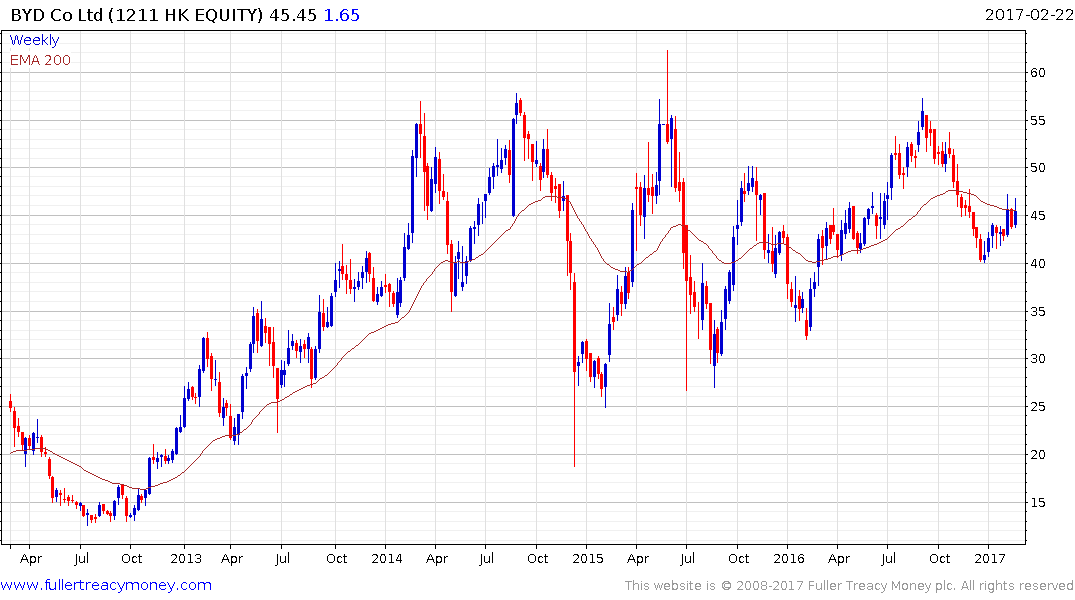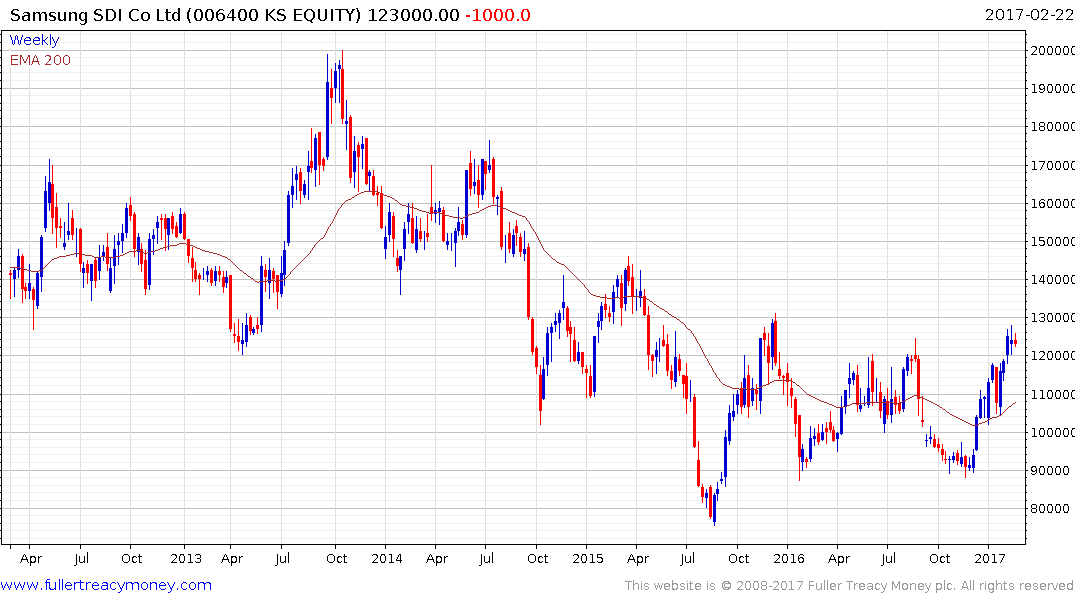Big Batteries Coming of Age Prompt Bankers to Place Bets
This article by Joe Ryan and Brian Eckhouse for Bloomberg may be of interest to subscribers. Here is a section:
“Having big money come in is the first step to widespread deployment,” Brad Meikle, a San Francisco-based analyst for Craig-Hallum Capital Group LLC, said in an interview.
That’s a shift from many of the storage projects we’ve seen to date as expensive components and unproven revenue potential made commercial lenders leery. Developers typically have financed systems from their own balance sheets, cobbling together revenue from short-term utility contracts or wholesale electricity markets.
“We see an opportunity in the space,” Ralph Cho, Investec’s co-head of power for North America in New York, said in an interview. “We’re attempting to be a first mover.”
Storage contracts to date in the U.S. and Canada rarely exceeded three years, said Bryan Urban, head of North American operations for the Yverdon-les-Bains, Switzerland-based storage developer Leclanche SA. Now utilities are signing agreements for three to seven years, and sometimes as long at 10 years, he said. And in the U.K., National Grid Plc is signing four-year contracts for storage services
One of the most popular statistics quoted is that solar cells are rapidly approaching competitiveness even with coal. However that does not solve the intermittency problem. A better question is when will batteries be competitive with the cost of maintaining coal fired backup supply for inevitable demand surges? That is a question we should be able to answer soon as the number of utility scale batteries in operation increases.
.png)
AES Corp in conjunction with Mitsubishi announced last month it will be providing India’s first utility scale battery. That follows a number of installations the company has already made in the USA and Europe. While the majority of the company’s income originates in Latin America and it is a utility in its own right, it is also a leader in delivering utility scale battery solutions.
The share has been ranging mostly between $8 and $15 since the 2008 collapse but has recently stabilised near $11 and is now challenging the five-month progression of lower rally highs.

BYD has supplied at least one of the battery arrays in an AES Corp plant according to this article. The share has been ranging with an upward bias since late 2014 and a sustained move below HK$40 would be required to question medium-term scope for continued higher to lateral ranging.

Samsung SDI has rallied over the last few weeks to break a three-year progression of lower rally highs. A sustained move below the trend mean would now be required to question potential for additional upside.


